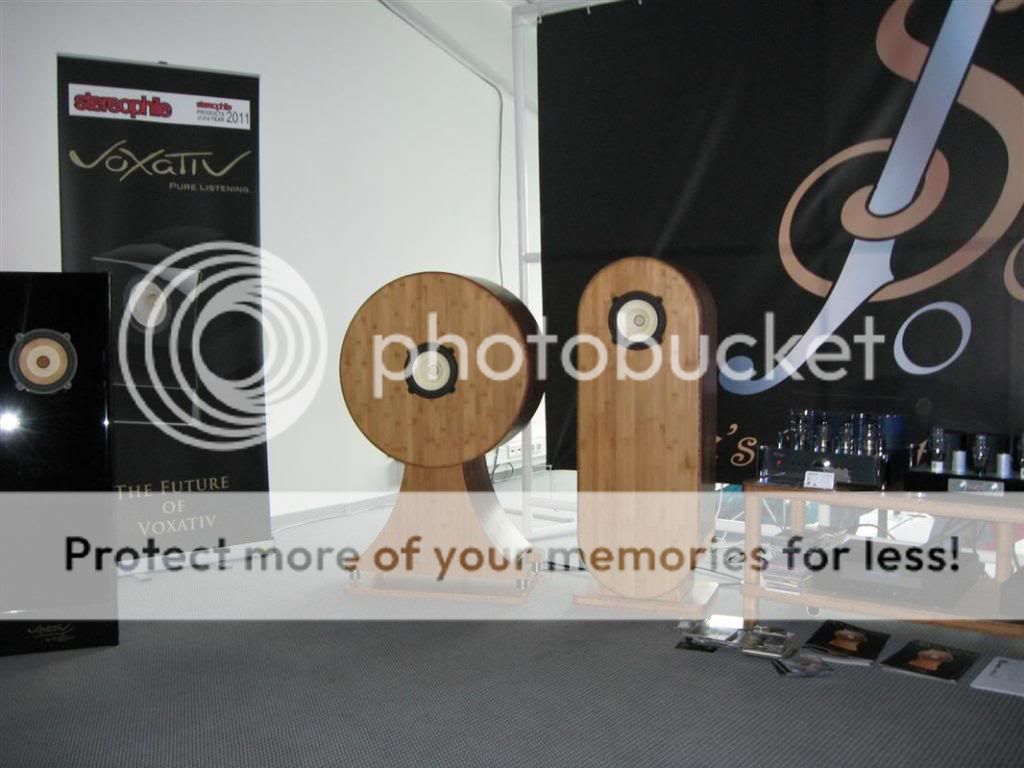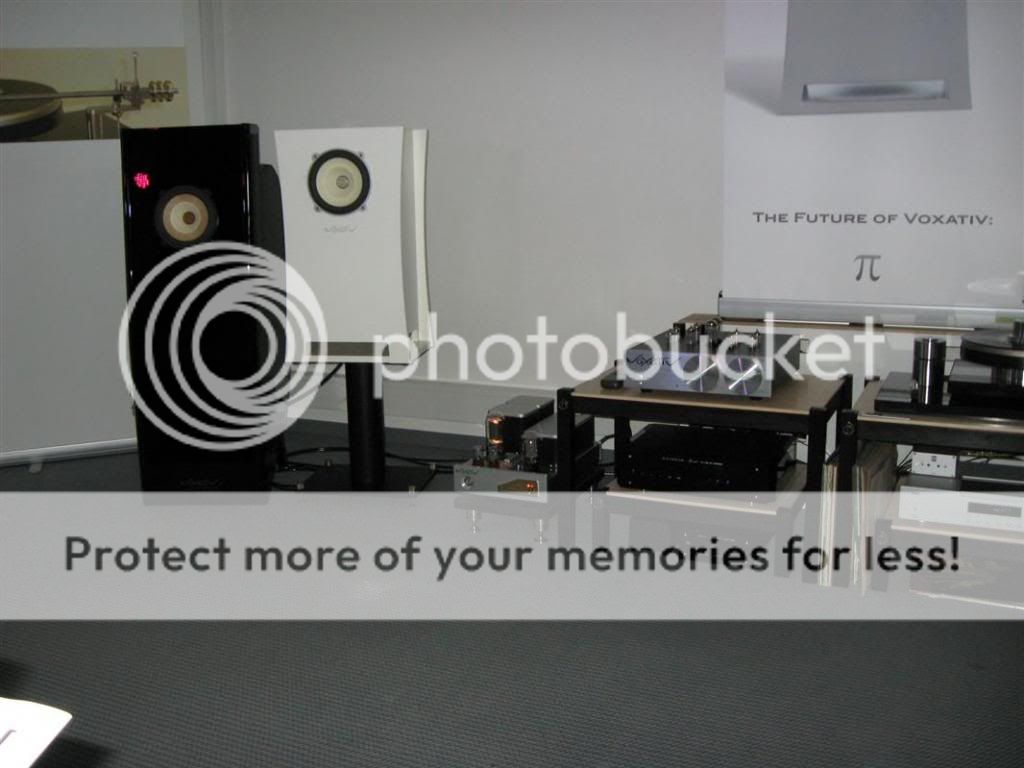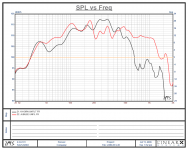Is that the newer variant of the Klipsch corner horn with two 12" drivers instead of one 15" ?
Yes, it is called the Klipschorn Jubilee.
It never made it into the consumer audio line but it is used in their cinema/professional market.
The big horn you see pictured is the K-402. There is a scaled down version also, the K-510. They are both 2 inch throats and can be configured in a 2-way system for home use.
Is that the newer variant of the Klipsch corner horn with two 12" drivers instead of one 15" ?
It is, it's the Klipsch Jubilee. A masterpiece. It's fairly recent, designed with modern technology and tools and there is a professional design philosophy behind it (range, applied physics, modern design tools used, selection of materials etc). Really, it's the least silly horn here.
And what a shame that is. Paul wanted something else. Shame on you Klipsch!It never made it into the consumer audio line but it is used in their cinema/professional market.
Charles,Wonder what the huge "point" source in the last picture might have been used for (i.e. what the other side might have been aimed at).
But those look like old JBL drivers that cost a fortune back then.
The JBL drivers were being "run in" and measured to verify they make spec and don't suffer "infant mortality".
EV used to do that too, the drivers had to withstand their rating for quite a long time, at least 24 hours IIRC.
The extra work does add to the cost, but is worth it, replacing defective drivers can be very difficult (and expensive) in many installations.
Charles,
The JBL drivers were being "run in" and measured to verify they make spec and don't suffer "infant mortality".
EV used to do that too, the drivers had to withstand their rating for quite a long time, at least 24 hours IIRC.
The extra work does add to the cost, but is worth it, replacing defective drivers can be very difficult (and expensive) in many installations.
I worked on a giant storage project for a cloud based software company, and we found the exact same thing:
Let's say you're looking for a hard disk for your project. One disk costs $150 and is used in 'consumer' grade electronics. The other disk is an 'enterprise' disk with high performance intended for large customers (dot coms, online apps, etc.) The second disk costs $300.
We found that you get higher reliability by simply buying the first disk in bulk, run them for a day to find the lemons, and RMA them. It became such a nuisance for the disk manufacturers, they started to refuse to sell their 'consumer' disks in large quantities!
...
The JBL drivers were being "run in" and measured to verify they make spec and don't suffer "infant mortality".
I don't think that's what it's for, too awkward for that.
I think the OP observation that it's a "point source" (sort of!) is the clue.
Presumably for tests of response to intense broad spectrum noise/vibration.
Aerospace industry in California in the 1950/60s makes sense.
Have the money, the requirements to certify that, say, airborne electronics can withstand the noise/vibration, and JBL is just down the road.
It's classic, I expect someone must know where it's from.
Best wishes
David
If you are going to do a LF horn then that's how big it needs to be to work right. If you don't have that much space then don't use a horn on the LFs.
I agree. People have been trying novel ways to fit large horns into a small space for years. It simply doesn't work for conventional front loaded horns. The best modern day LF horn arrangement is the tapped horn. It is bandwidth is limited to about 2.5 octaves, but it does play low. While the Jubilee is an improvement over the Klipschorn, its low frequency performance is still poor. The perceivable difference in LF performance between the Klipschorn and Jubilee is barely audible. The Jubilee’s best improvement was in the high frequencies. However, it still suffers from the same frequency ripples of the Klipschorn due to the horizontal separation of the two horn mouths. Single exit horns are superior in this respect.
Attachments
The perceivable difference in LF performance between the Klipschorn and Jubilee is barely audible. The Jubilee’s best improvement was in the high frequencies.
I remember having read a paper in JAES written by someone from Klipsch (maybe it was the "Old Man" himself) about a new topology using two 12" drivers exactly because of the better extension at its upper end. I was just not aware that it actually went into production.
Nowadays that there are a lot of simulation tools around I think there would be other topologies worthwhile to be taken into consideration, not just the tapped horn. If one type of topology rises the SPL for something like 3 dB it could already be worth being tried out IMHO. Like the hybrid between bandpass and front loaded horn (like the ones once used by Turbosound) etc.
Regards
Charles
@Omholt,
This is a double horn:
This is a single horn:

The double horn aka bifurcated horn, has smaller radius bends compared to the single. Believed to cause less havoc in the mids. Works ok, but you end up with combfiltering due to the double exits
This is a double horn:
An externally hosted image should be here but it was not working when we last tested it.
This is a single horn:

The double horn aka bifurcated horn, has smaller radius bends compared to the single. Believed to cause less havoc in the mids. Works ok, but you end up with combfiltering due to the double exits
Thanks. Isn't this the same as a 2-way vs. 1-way?@Omholt,
This is a double horn:
This is a single horn:
The double horn aka bifurcated horn, has smaller radius bends compared to the single. Believed to cause less havoc in the mids. Works ok, but you end up with combfiltering due to the double exits
If that's case; sure, a 1-way speaker will have less lobing but it was also have other issues and overall a 2-way speaker is a better compromise IMO.
Originally Posted by weltersys
The JBL drivers were being "run in" and measured to verify they make spec and don't suffer "infant mortality".
Given the budgets, almost anything is possible, but given the level of engineering talent I'd say that the Aerospace industry would be using shaker tables to test airborne electronics, they are an order of magnitude more efficient, (vibration is what damages equipment, noise induced vibration is wasting most of the mechanical energy in heat) very important when amplifier power was far more costly than today, and far more easily manipulated than tons of drivers.
Art
The JBL drivers were being "run in" and measured to verify they make spec and don't suffer "infant mortality".
David,I don't think that's what it's for, too awkward for that.
I think the OP observation that it's a "point source" (sort of!) is the clue.
Presumably for tests of response to intense broad spectrum noise/vibration.
Aerospace industry in California in the 1950/60s makes sense.
Have the money, the requirements to certify that, say, airborne electronics can withstand the noise/vibration, and JBL is just down the road.
It's classic, I expect someone must know where it's from.
Given the budgets, almost anything is possible, but given the level of engineering talent I'd say that the Aerospace industry would be using shaker tables to test airborne electronics, they are an order of magnitude more efficient, (vibration is what damages equipment, noise induced vibration is wasting most of the mechanical energy in heat) very important when amplifier power was far more costly than today, and far more easily manipulated than tons of drivers.
Art
Last edited:
I have heard some but don't if they qualify for a well design. Best fullranger I've heard is electrostatics. The bass and dynamics are quite poor though.Omholt, be sure to listen to a well designed fullranger before deciding a 2-way is the way to go
What is a well designed 1-way speaker in your mind?
These were quite disappointing.


re JBL driver picture... this may clear things up a bit:
"JBL and the Aeronautical Industry
Bill Thomas did not end his association with the aeronautical industry with his departure from Marquardt Aircraft in 1949. During his tenure as owner of JBL, he kept ownership and operation of Kittle-Muffler and established a new subsidiary, Kittle-Lacy Inc., which was instrumental in the development of jet engine silencers. Thomas bridged his involvement in both the aeronautical and loudspeaker industries with the establishment of a fully owned subsidiary of JBL called Transducers Inc. in the 1950s.
This subsidiary was primarily known for developing test facilities to simulate high intensity noise and vibration conditions for the design of missile components. The above picture illustrates such a facility. The drivers shown are believed to be Transducers Inc. 375H compression drivers and 150H low-frequency drivers, designed and built by JBL. The 150H bore no relation to the 150-4C of 1953, or obviously, the 150-4H of 1985. It consisted of the chassis from a 130A with a cone derived from the LE15A. The heavier cone of the LE15A was essential in this application since the lighter cones of JBL’s other 15” drivers would not have withstood the high power levels. The 375H was a modified version of the JBL 375 using a stainless steel diaphragm that was considerably heavier, but more rugged than the standard aluminum diaphragm.
JBL established numerous facilities similar to that pictured above throughout the aeronautical industry, some of which remained in operation as late as 2000."
"JBL and the Aeronautical Industry
Bill Thomas did not end his association with the aeronautical industry with his departure from Marquardt Aircraft in 1949. During his tenure as owner of JBL, he kept ownership and operation of Kittle-Muffler and established a new subsidiary, Kittle-Lacy Inc., which was instrumental in the development of jet engine silencers. Thomas bridged his involvement in both the aeronautical and loudspeaker industries with the establishment of a fully owned subsidiary of JBL called Transducers Inc. in the 1950s.
This subsidiary was primarily known for developing test facilities to simulate high intensity noise and vibration conditions for the design of missile components. The above picture illustrates such a facility. The drivers shown are believed to be Transducers Inc. 375H compression drivers and 150H low-frequency drivers, designed and built by JBL. The 150H bore no relation to the 150-4C of 1953, or obviously, the 150-4H of 1985. It consisted of the chassis from a 130A with a cone derived from the LE15A. The heavier cone of the LE15A was essential in this application since the lighter cones of JBL’s other 15” drivers would not have withstood the high power levels. The 375H was a modified version of the JBL 375 using a stainless steel diaphragm that was considerably heavier, but more rugged than the standard aluminum diaphragm.
JBL established numerous facilities similar to that pictured above throughout the aeronautical industry, some of which remained in operation as late as 2000."
Thanks for the info, I stand corrected.re JBL driver picture... this may clear things up a bit:
"JBL and the Aeronautical Industry
Bill Thomas did not end his association with the aeronautical industry with his departure from Marquardt Aircraft in 1949.
During his tenure as owner of JBL, he kept ownership and operation of Kittle-Muffler and established a new subsidiary, Kittle-Lacy Inc., which was instrumental in the development of jet engine silencers. ..
Thomas bridged his involvement in both the aeronautical and loudspeaker industries with the establishment of a fully owned subsidiary of JBL called Transducers Inc. in the 1950s.
This subsidiary was primarily known for developing test facilities to simulate high intensity noise and vibration conditions for the design of missile components. The above picture illustrates such a facility...
The 375H was a modified version of the JBL 375 using a stainless steel diaphragm that was considerably heavier, but more rugged than the standard aluminum diaphragm."
Makes sense that the owner of JBL would use his more expensive drivers rather than competing shaker tables
Wonder what the response of the stainless steel diaphragm 375s was like, and if any found there way into the PA world.
- Status
- This old topic is closed. If you want to reopen this topic, contact a moderator using the "Report Post" button.
- Home
- Loudspeakers
- Multi-Way
- Silly Horns
